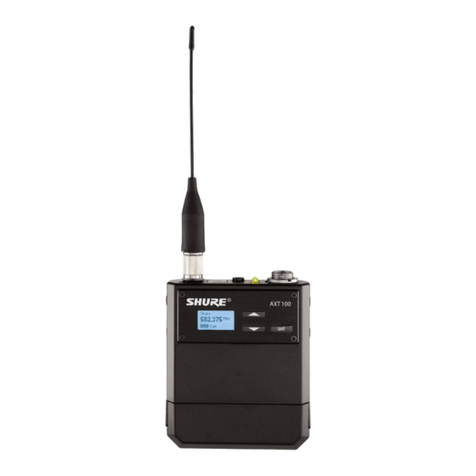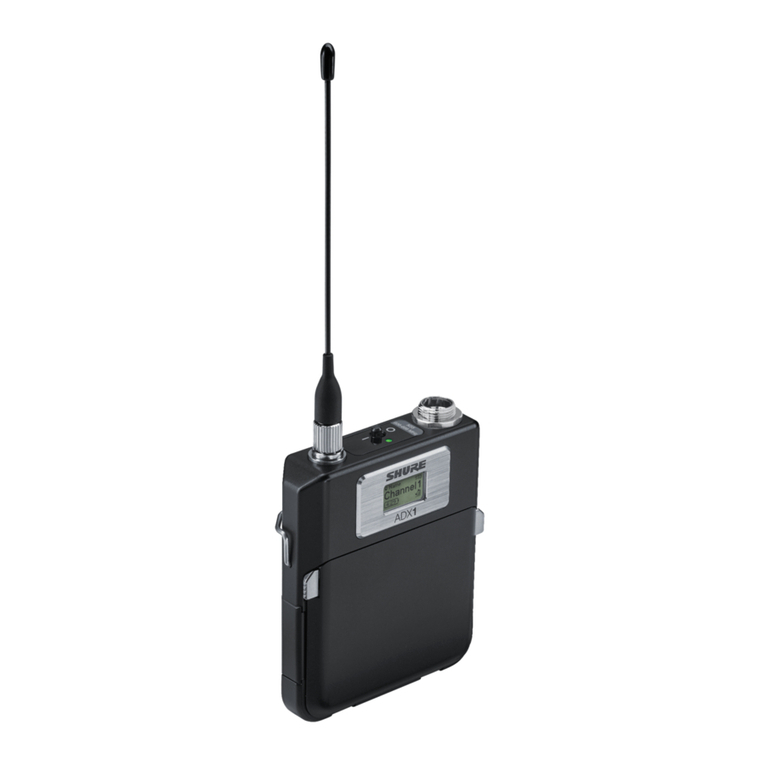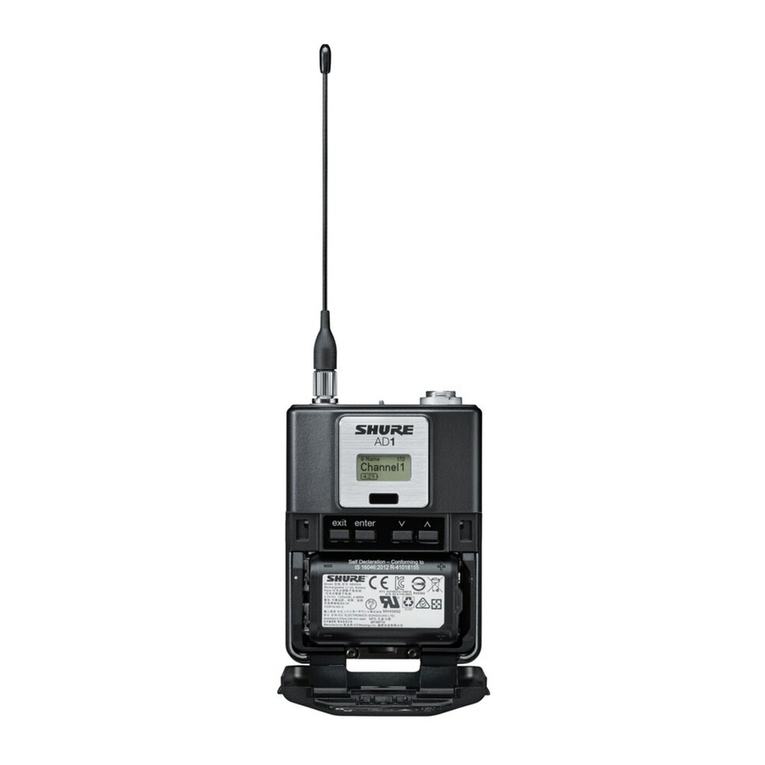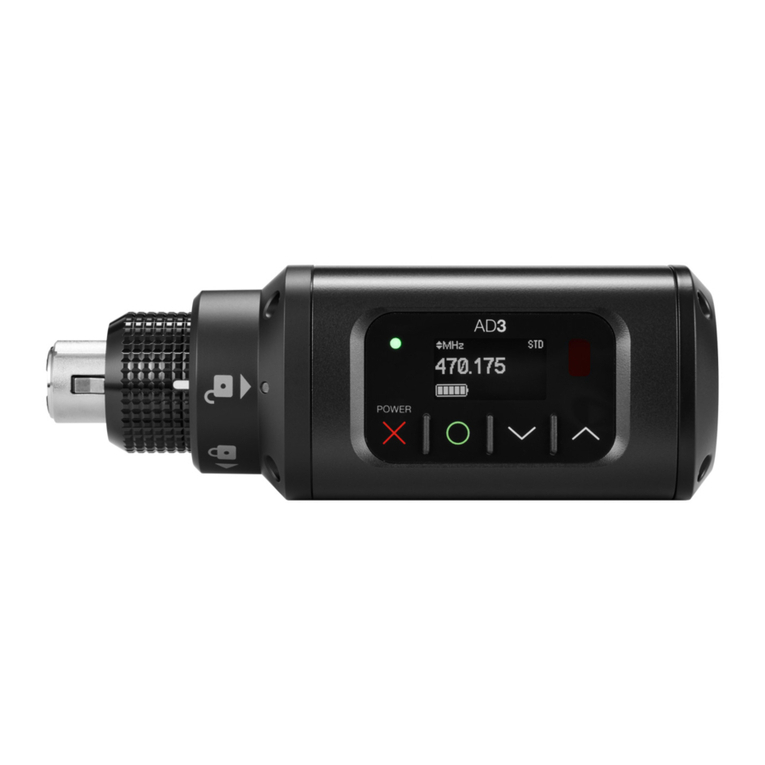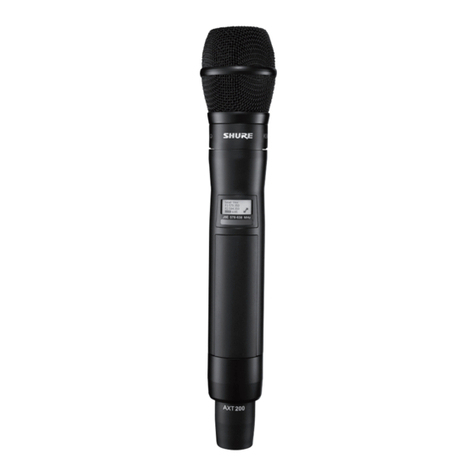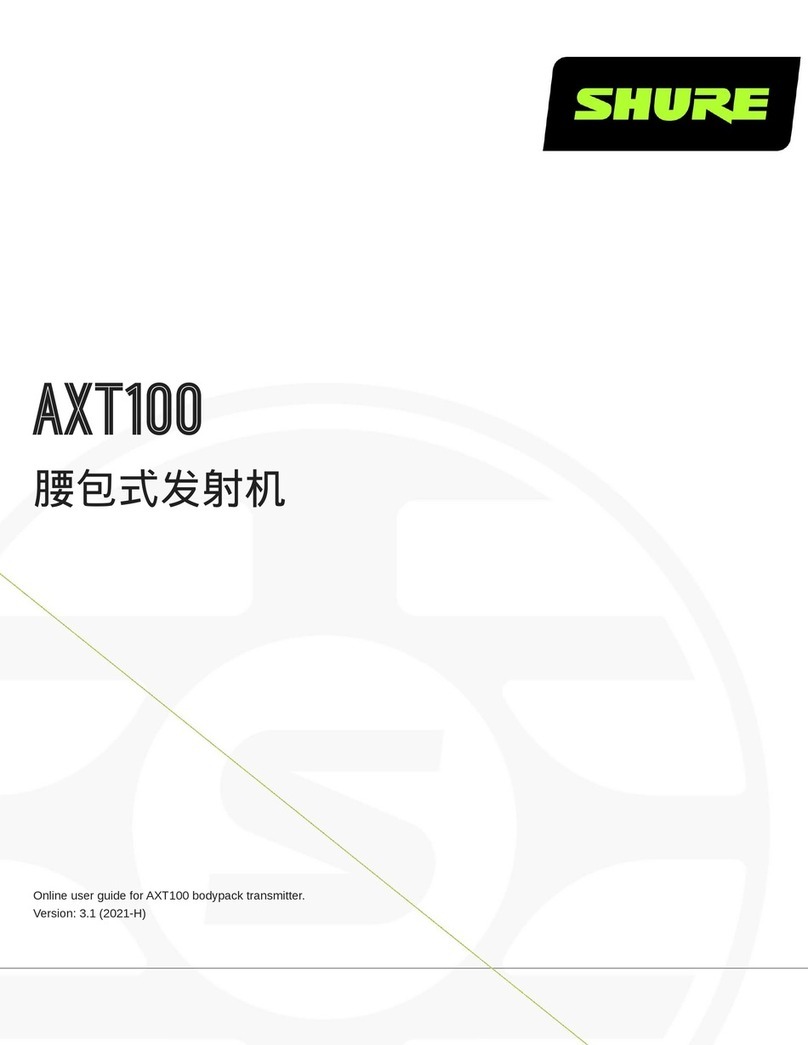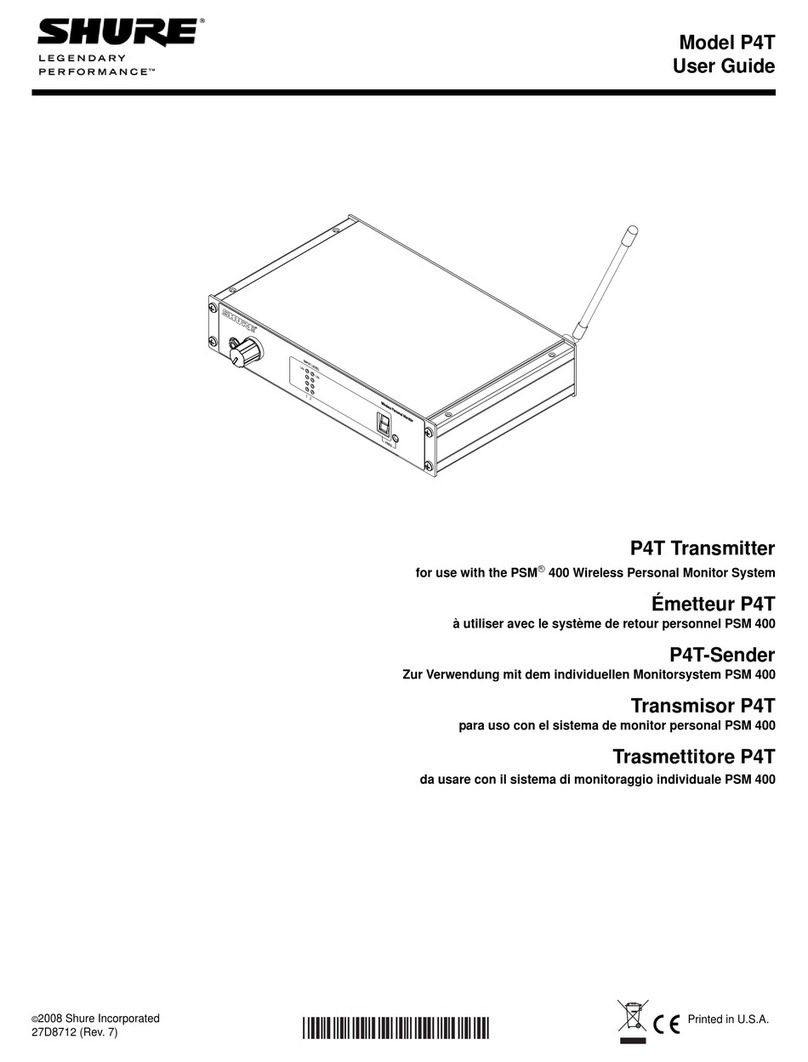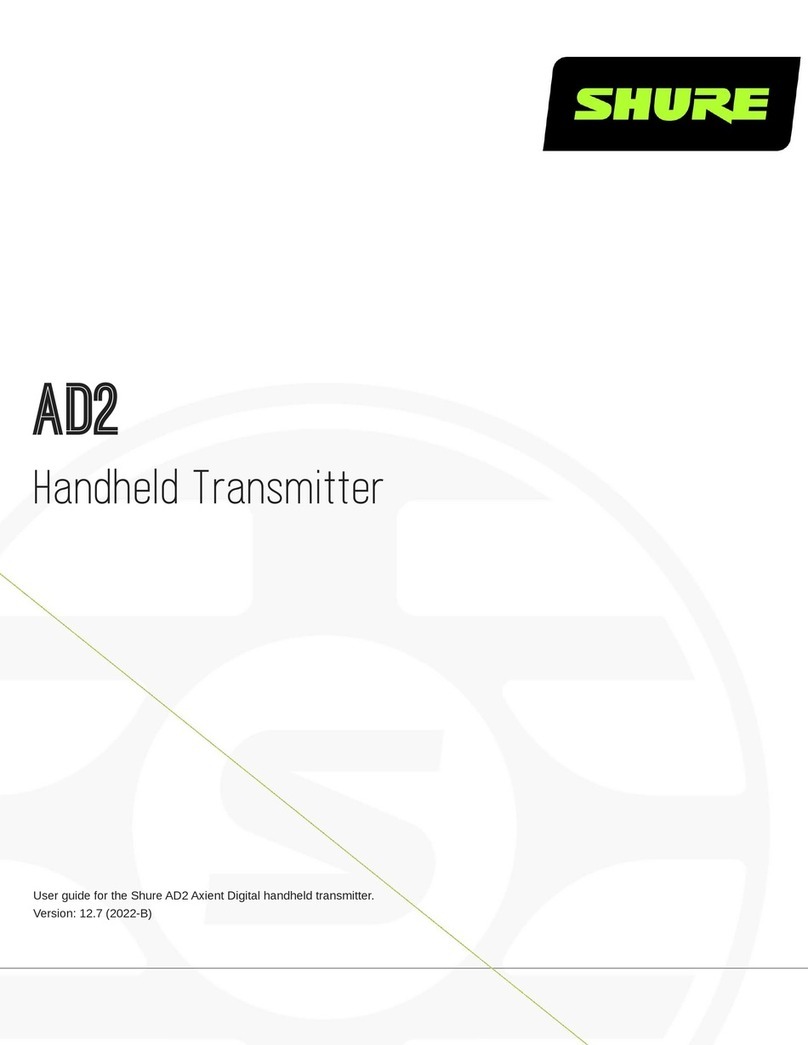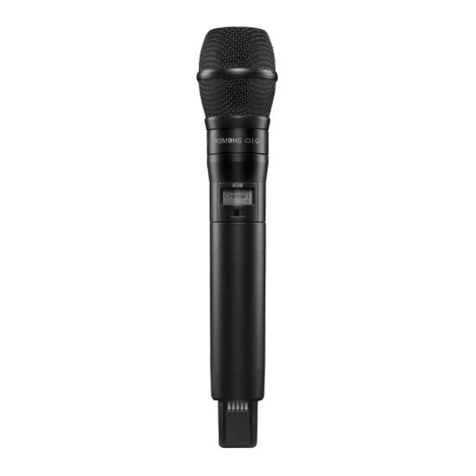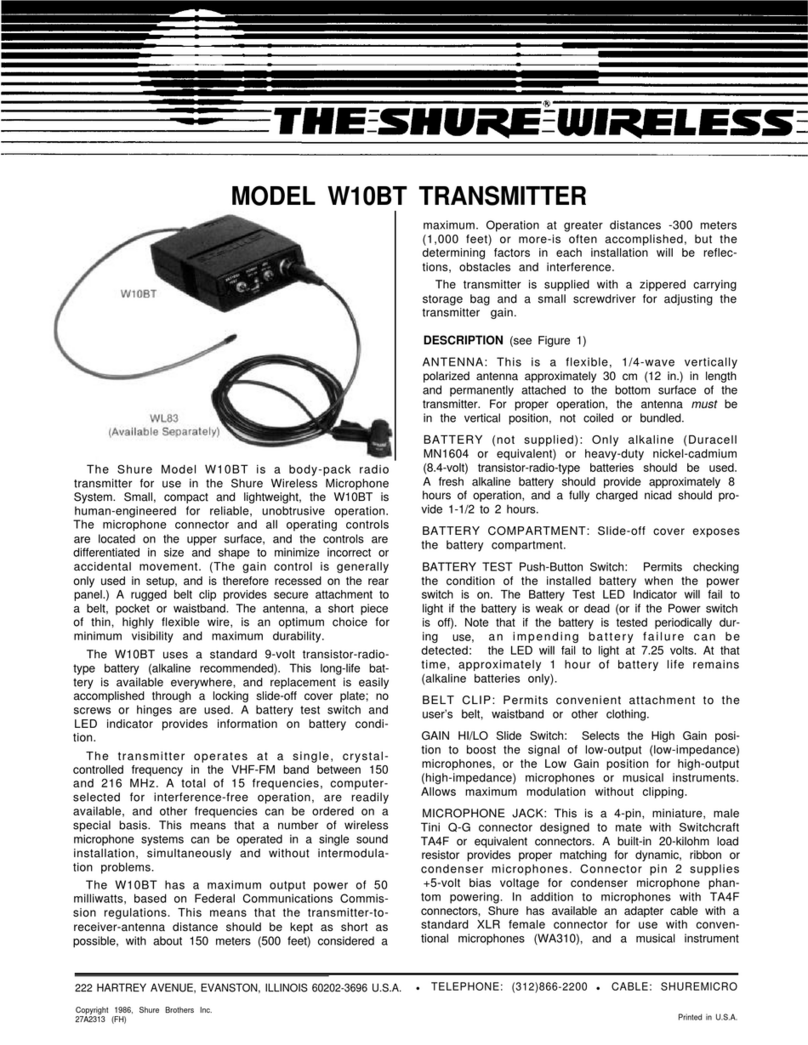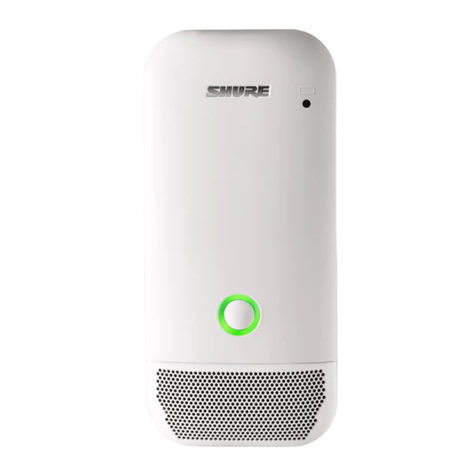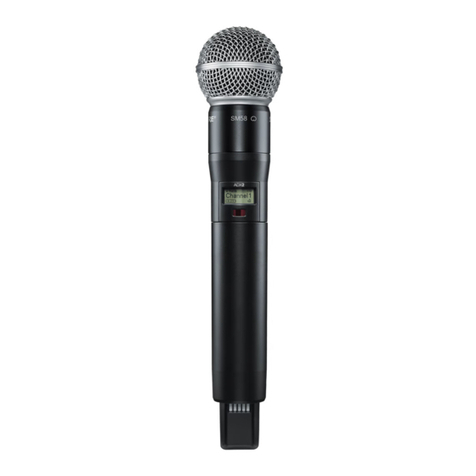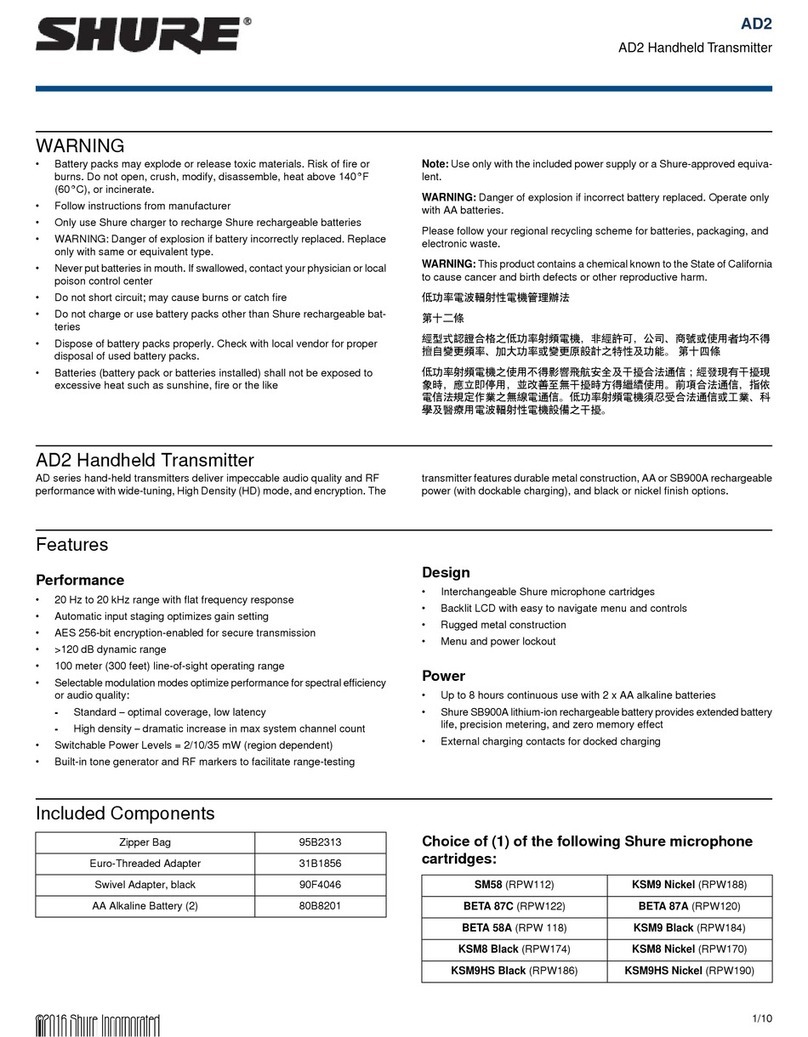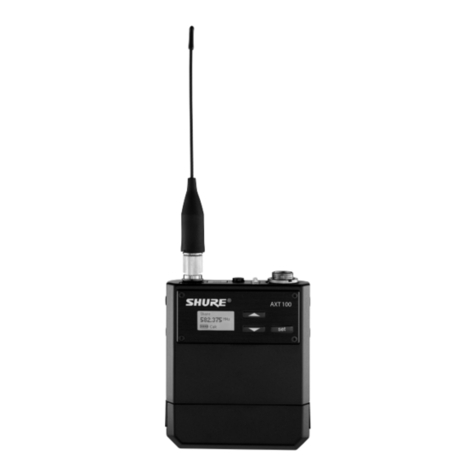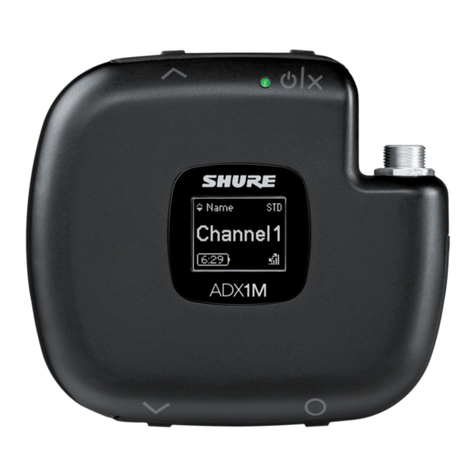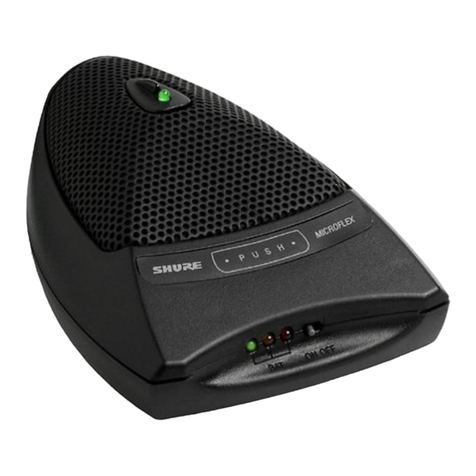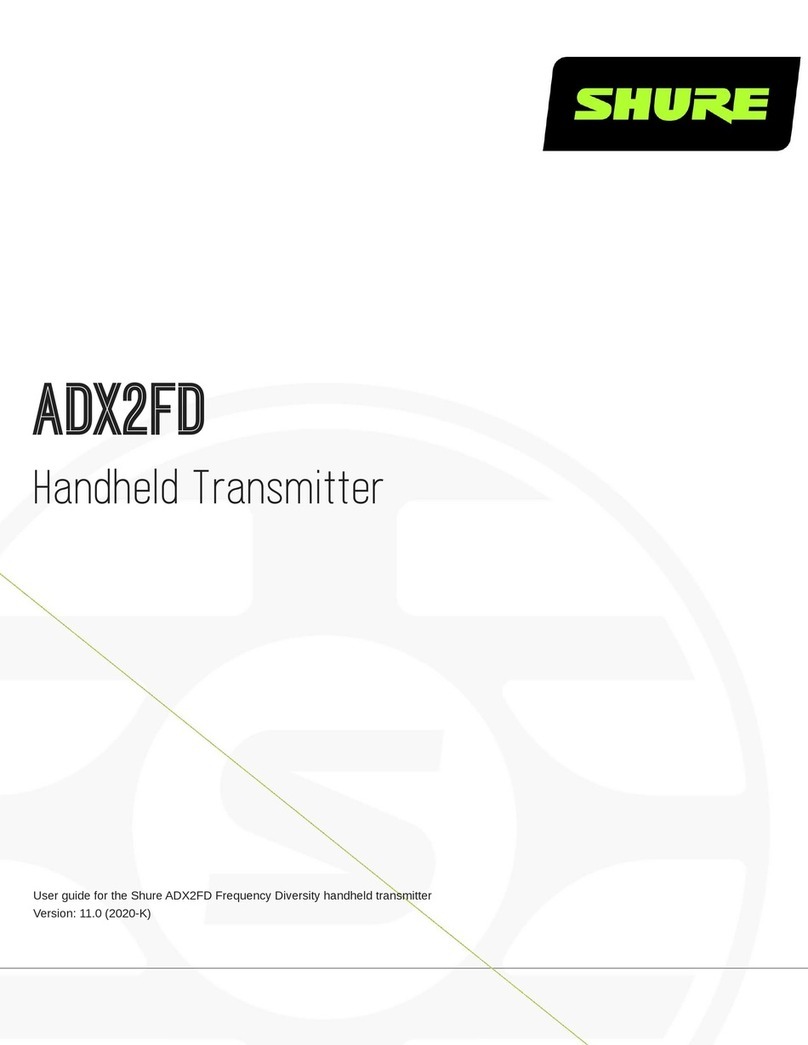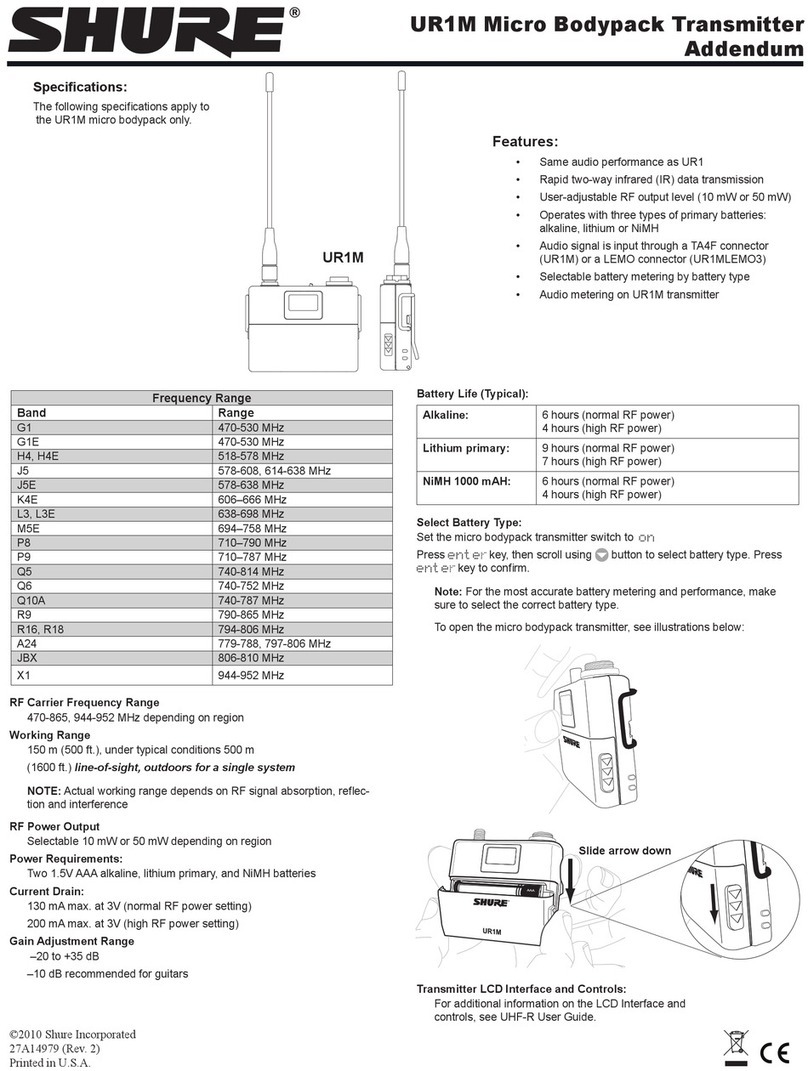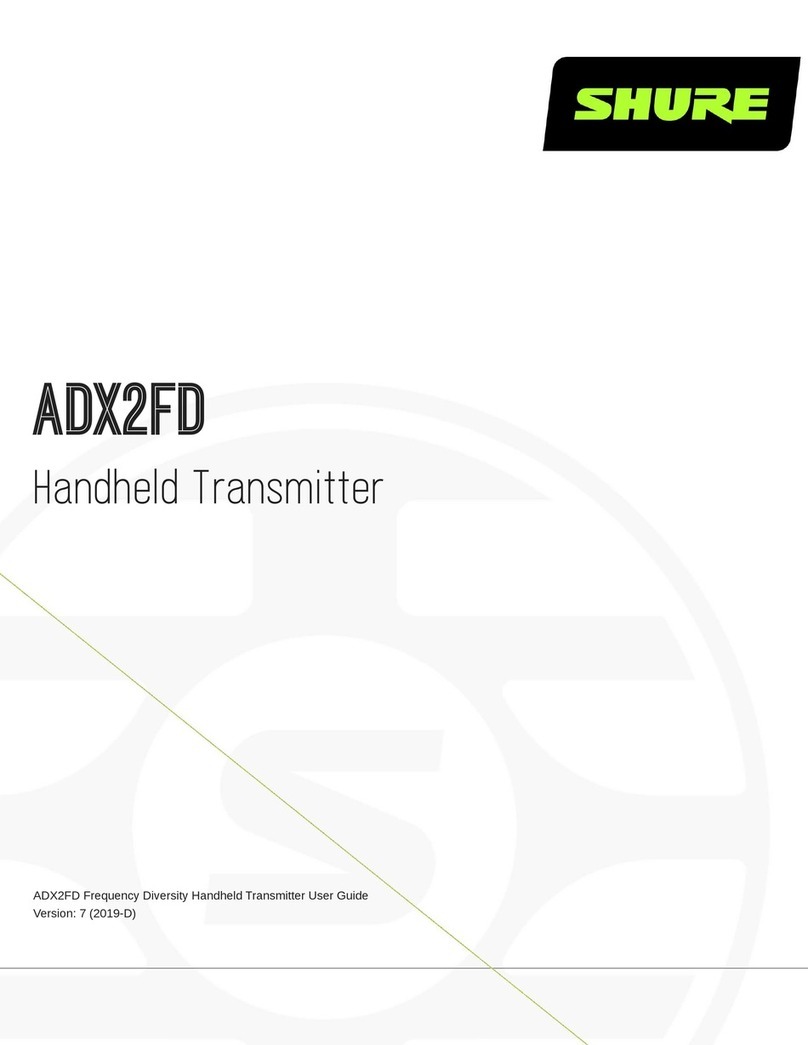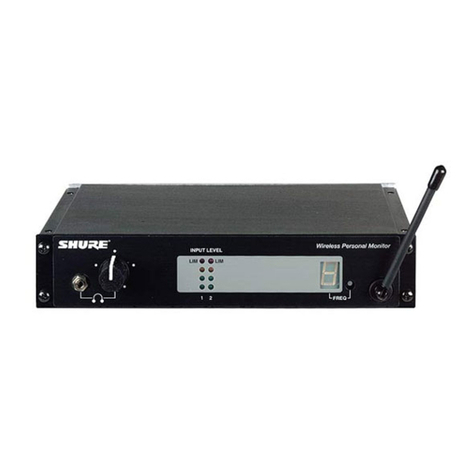
10
Certifications
This device complies with part 15 of the FCC Rules. Operation is subject
to the following two conditions: (1) This device may not cause harmful
interference, and (2) this device must accept any interference received,
including interference that may cause undesired operation.
Certified under FCC Part 74.
Certified by IC in Canada under RSS-102 and RSS-210.
Certified by IC in Canada under RSS-247 and RSS-GEN.
IC: 616A-ULXD6G50, 616A-ULXD6H50, 616A-ULXD6J50,
616A-ULXD6X52, 616A-ULXD8G50, 616A-ULXD8H50, 616A-ULXD8J50,
616A-ULXD8X52.
FCC: DD4ULXD6G50, DD4ULXD6H50, DD4ULXD6J50, DD4ULXD6X52,
DD4ULXD8G50, DD4ULXD8H50, DD4ULXD8J50, DD4ULXD8X52.
This product meets the Essential Requirements of all relevant European
directives and is eligible for CE marking.
This device complies with Industry Canada licence-exempt RSS stan-
dard(s). Operation of this device is subject to the following two conditions:
(1) this device may not cause interference, and (2) this device must accept
any interference, including interference that may cause undesired opera-
tion of the device.
Le présent appareil est conforme aux CNR d'Industrie Canada applicables
aux appareils radio exempts de licence. L'exploitation est autorisée aux
deux conditions suivantes : (1) l'appareil ne doit pas produire de brouil-
lage, et (2) l'utilisateur de l'appareil doit accepter tout brouillage radioélec-
trique subi, même si le brouillage est susceptible d'en compromettre le
fonctionnement.
Note: EMC conformance testing is based on the use of supplied and rec-
ommended cable types. The use of other cable types may degrade EMC
performance.
The CE Declaration of Conformity can be obtained from: www.shure.com/
europe/compliance
Authorized European representative:
Shure Europe GmbH
Headquarters Europe, Middle East & Africa
Department: EMEA Approval
Jakob-Dieffenbacher-Str. 12
75031 Eppingen, Germany
Phone: +49-7262-92 49 0
Fax: +49-7262-92 49 11 4
Information to the user
This equipment has been tested and found to comply with the limits for a
Class B digital device, pursuant to Part 15 of the FCC Rules. These limits
are designed to provide reasonable protection against harmful interference
in a residential installation. This equipment generates uses and can radi-
ate radio frequency energy and, if not installed and used in accordance
with the instructions, may cause harmful interference to radio communi-
cations. However, there is no guarantee that interference will not occur in
a particular installation. If this equipment does cause harmful interference
to radio or television reception, which can be determined by turning the
equipment off and on, the user is encouraged to try to correct the interfer-
ence by one or more of the following measures:
• Reorient or relocate the receiving antenna.
• Increase the separation between the equipment and the receiver.
• Connect the equipment to an outlet on a circuit different from that to
which the receiver is connected.
• Consult the dealer or an experienced radio/TV technician for help.
LICENSING INFORMATION
Licensing: A ministerial license to operate this equipment may be required
in certain areas. Consult your national authority for possible requirements.
Changes or modifications not expressly approved by Shure Incorporated
could void your authority to operate the equipment. Licensing of Shure
wireless microphone equipment is the user’s responsibility, and licens-
ability depends on the user’s classification and application, and on the
selected frequency. Shure strongly urges the user to contact the appropri-
ate telecommunications authority concerning proper licensing, and before
choosing and ordering frequencies.
WARNING: Danger of explosion if incorrect battery replaced. Operate
only with AA batteries.
WARNING
• Battery packs may explode or release toxic materials. Risk of fire or
burns. Do not open, crush, modify, disassemble, heat above 140°F
(60°C), or incinerate.
• Follow instructions from manufacturer
• Only use Shure charger to recharge Shure rechargeable batteries
• WARNING: Danger of explosion if battery incorrectly replaced. Replace
only with same or equivalent type.
• Never put batteries in mouth. If swallowed, contact your physician or
local poison control center
• Do not short circuit; may cause burns or catch fire
• Do not charge or use battery packs other than Shure rechargeable
batteries
• Dispose of battery packs properly. Check with local vendor for proper
disposal of used battery packs.
• Batteries (battery pack or batteries installed) shall not be exposed to
excessive heat such as sunshine, fire or the like
WARNING: This product contains a chemical known to the State of
California to cause cancer and birth defects or other reproductive harm.
Please follow your regional recycling scheme for batteries, packaging, and
electronic waste.
